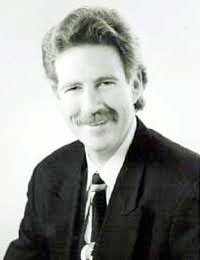 |
One morning while Ingrid Ghenender was taking a shower, she felt a pain in her head. She made it to her bed before passing out. When she came to, she felt horribly sick and crawled to the bathroom as she was too weak to walk. Ingrid was experiencing a "brain aneurysm." This brain aneurysm, which had probably been in her head for a long time, had suddenly ruptured, bleeding into her brain, and leaving her perilously close to death. She collapsed on the floor, not knowing what to do. Ronnie and Andrew were at a baseball game. Tessa was still sleeping in the room next door, but Ingrid did not want her young daughter to see her in such a bad state. Fortunately, Ronnie called home and Ingrid managed to get to the phone. Help was on its way.
An ambulance took Ingrid to the hospital. The neurosurgeon was called and the staff prepared to take pictures of Ingrid's brain. This process is called an angiogram. Dr. Oleg Chikovani, a great neurosurgeon, told Ronnie that if the pictures showed that the aneurysm was in any place other than the back of the head, he would operate immediately. He returned after examining the pictures with more bad news. Ronnie's heart sank as Dr. Chikovani told him that conventional surgery would be extremely dangerous since the aneurysm was in the back of Ingrid's brain, on the vascular stem. In order to operate, the surgeon would have to go through her entire brain to reach the affected area, and the chances of him not damaging anything on his way, were very slim. Ronnie was beside himself, but Dr. Chikovani suggested that he consider an alternative experimental procedure for Ingrid.
The conventional neurologists and older doctors at the hospital all voted for conventional surgery. They told Ronnie that he was "crazy to consider an experimental procedure." As Ronnie explained, "it seems everyone is threatened when a new fangled idea comes around and threatens their profession. It was almost like the neurologists vs. the radiologists, the traditionalists vs. the upstarts. Fortunately, I've always been for the upstarts. Dr. Chikovani was the exception, he threw his ego to the wind, and considered Ingrid's well-being. He is a most gracious and talented doctor."
As soon as Ronnie okayed the experimental procedure, images of Ingrid's aneurysm were immediately transmitted to neurosurgeons at the medical center of University of California, San Francisco. They confirmed Dr. Chikovani's recommendation. Soon the "Lone Ranger" was on his way.
 |
Dr. Van Halbach is a specialist in neurosurgery at University of California San Francisco. He has performed thousands of operations on the blood vessels of the brain and several hundred involving brain aneurysms like Ingrid's. He uses a new procedure called "emergent endovascular occlusion with detachable coils," a non-invasive technique for certain kinds of brain aneurysms. The benefits of this alternative form of surgery are remarkable. Traditional brain surgery is extremely risky and usually requires long periods of recovery. With this procedure, patients are able to leave the hospital after only a few weeks.
Ronnie and Ingrid knew immediately that she was in the best possible hands. This experimental procedure was going to allow Ingrid a speedy recovery. But the pain this aneurysm had caused Ingrid is difficult to imagine. She took Morphine to alleviate her pain. Ronnie was not about to lose the love of his life and the wonderful mother of his children. They were ready to take the risks and come out of this nightmare and go home.
The operation Dr. Van Halbach performed involves the insertion of a tiny catheter through the thigh, which is threaded through to the affected artery in the brain. Then coils are transported through the catheter and inserted into the aneurysm, which eventually stops the blood flow to the affected area, and prevents any possible futher bleeding from the area. Dr. Van Halbach placed a coil into an artery in Ingrid's thigh, and then with the aid of video imaging, guided it through her body. Meanwhile, Ingrid lay awake, trying to hold her head very still for the entire three-hour procedure. The surgery was a success.
As Ronnie explained, "After the lifesaving operation, Dr. Van Halbach flew off into the sunset, back to where he came, just like The Lone Ranger." Van Halbach returned to San Francisco and the team at the hospital in Newport Beach, California monitored Ingrid's recovery closely for several days in the intensive care unit. One week and three days later she was able to leave the hospital.
Ingrid Ghenender has a love of life and kindness of spirit that makes her a great friend, mother, and wife. Always smiling and happy to drive the kids to baseball, soccer, dance and to help in the classroom, she is a wonderful member of the Laguna Beach community she calls home. She knows the importance of a good time and a great day at the beach with her friends and two children, Andrew and Tessa, and her great love, her husband, Ronnie. Throughout the ordeal, Ingrid says, she just wanted to be with her children and husband. The crisis had made her realize how much she loved all of them. She would never take her family for granted again.
Page created on 5/29/2008 4:27:03 PM
Last edited 1/6/2017 4:47:56 PM
University of California, San Francisco
Neurointerventional Radiology
505 Parnassus Ave., Rm. L352
San Francisco, CA 94957-0029
Tel: 415.353.1863
Fax: 415.353.8606
Email inquiries to: Dr. Van Halbach
